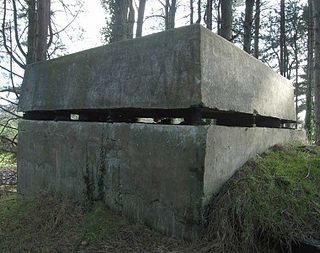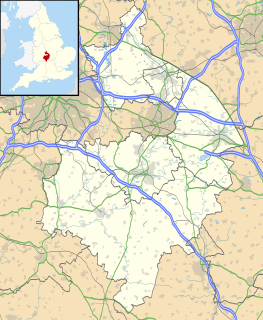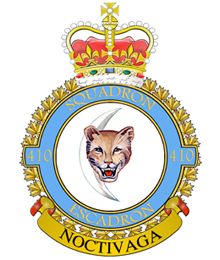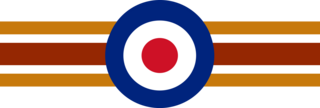
Royal Air Force Woodvale or RAF Woodvale is a Royal Air Force Station located 4 mi (6.4 km) next to the town of Formby in an area called Woodvale which is located to the south of Southport, Merseyside. Woodvale was constructed as an all-weather night fighter airfield for the defence of Liverpool. However, it did not open until 7 December 1941 which was just after the Liverpool Blitz which peaked in May of that year.

Royal Air Force Valley or more simply RAF Valley is a Royal Air Force station on the island of Anglesey, Wales, and which is also used as Anglesey Airport. It provides both Basic and Advanced fast-jet training using the Texan T1 and Hawk T2 and provides mountain and maritime training for aircrew using the Jupiter T1 helicopter.

Royal Air Force Ballyhalbert or more simply RAF Ballyhalbert is a former Royal Air Force station at Ballyhalbert on the Ards Peninsula, County Down, Northern Ireland

Royal Air Force Pembrey or RAF Pembrey was a Royal Air Force station located near the village of Pembrey, Carmarthenshire, 3 miles (4.8 km) northwest of Burry Port and 10.3 miles (16.6 km) south of Carmarthen, Wales. It remains in use as Pembrey Sands Air Weapons Range.

Royal Air Force West Malling or RAF West Malling is a former Royal Air Force station located 1.6 miles (2.6 km) south of West Malling, Kent and 5.2 miles (8.4 km) west of Maidstone, Kent, England.

Royal Air Force East Fortune or more simply RAF East Fortune is a former Royal Air Force station. The former station is located just south of the village of East Fortune and a short distance east of Edinburgh in Scotland. It was used as a fighter station during the First World War and for training and night fighters during the Second World War. The motto of the station was "Fortune Favours the Bold".

Royal Air Force Scorton, was a Royal Air Force flying base located next to the village of Scorton in North Yorkshire, England. The base was opened in October 1939 as part of 13 Group Fighter Command and a satellite station of RAF Catterick. It was used by the Royal Air Force, the Royal Canadian Air Force, and the United States Army Air Forces Ninth Air Force during the war.

No. 26 Squadron of the Royal Air Force was formed in 1915 and was disbanded for the last time in 1976.

Royal Air Force Ouston, or more simply RAF Ouston, is a former Royal Air Force station that was located near the village of Stamfordham and the village of Heddon-on-the-Wall on Hadrian's Wall near Newcastle upon Tyne. It was built as a Second World War aerodrome and is today used by the British Army. Just north of the airfield is Richmond Hill, Northumberland, in the parish of Stamfordham.

Predannack Airfield is an aerodrome near Mullion on The Lizard Peninsula of Cornwall in the United Kingdom. The runways are operated by the Royal Navy and today it is a satellite airfield and relief landing ground for nearby RNAS Culdrose.

Army Aviation Centre (AAC) Middle Wallop is a British Army airfield located near the Hampshire village of Middle Wallop, used for Army Air Corps training. The base hosts 2 (Training) Regiment AAC and 7 (Training) Regiment AAC under the umbrella of the Army Aviation Centre. 2 (Training) Regiment performs ground training; 7 (Training) Regiment trains aircrew on AAC aircraft after they complete basic training at RAF Shawbury.

Royal Air Force Honiley or RAF Honiley is a former Royal Air Force station located in Wroxall, Warwickshire, 7 miles (11 km) southwest of Coventry, England.

410 Tactical Fighter Operational Training Squadron, nicknamed the "Cougars", is a Royal Canadian Air Force aircraft squadron currently located at Canada's primary training base for the CF-18, at Cold Lake, Alberta. The squadron was formed during the Second World War as an RCAF squadron under the Royal Air Force (RAF), at RAF Ayr, near Prestwick, in Scotland.
No. 116 Squadron RAF was a Royal Air Force squadron first formed as part of the Royal Flying Corps during the First World War. Reformed as part of the RAF during the Second World War it served as an anti-aircraft calibration unit and also operated post-war from 1952 until 1958.
No. 248 Squadron was a squadron of the Royal Air Force, active immediately after World War I, and again during World War II.

Number 125 (Newfoundland) Squadron was a Royal Air Force squadron active during World War II and briefly in the mid-1950s. Throughout its service the squadron primarily operated night fighters.
No. 287 Squadron was an anti-aircraft co-operation squadron of the Royal Air Force from 1941 to 1946.

No. 255 Squadron RAF was a Royal Air Force Squadron formed as an anti-submarine unit in First World War and a night-fighter unit in Second World War. The First World War squadron was formed from former Royal Naval Air Service coastal flights and was responsible for coastal anti-submarine patrols. It was disbanded after the war.

Royal Air Force Hutton Cranswick or more simply RAF Hutton Cranswick is a former Royal Air Force station located to the south of Driffield and immediately south west of the village of Hutton Cranswick in the East Riding of Yorkshire, England. The station was developed as a fighter base with many Spitfire fighter squadrons passing through. It was used by the Royal Air Force, the Royal Canadian Air Force (RCAF), and several Polish Fighter Squadrons of the RAF. It was opened in 1942, and disposed of in 1946.

Redcar Aerodrome is a former First World War airfield located in Redcar, North Yorkshire, England. The site hosted an elementary flying school for newly entered pilots into the Royal Naval Air Service, though some offensive and defensive operations were flown from Redcar as well. The base was created as part of chain of new air stations after the German naval bombardment of east coast towns in December 1914. The base had a brief operational lifespan between July 1915 and December 1919, after which it was decided not to retain Redcar as an active station, and much of the site has been re-used for housing.

















